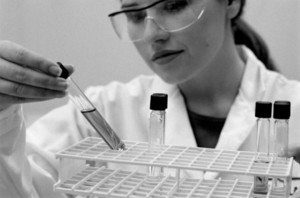According to an analysis by Robert Kennedy, Manager of Industry Research for Thomson Reuters API Intelligence, as published in Scrip News of 9 December 2009, a striking number of Chinese companies are gearing up to supply pharmaceutical ingredients to the regulated markets of the west.
As he writes, there are several factors working in favour of China's API sourcing market. In comparison to India, where fermentation and steroid manufacturing have never become widespread, China has limited gaps in API manufacturing technology and easy access to a wide variety of intermediates and chemicals. China also has a talented workforce, a lower cost base in comparison to its western counterparts and improving IP protection. Moreover, many Chinese companies are investing heavily in both regulatory compliance and R & D. Non-compliant plants are closing and many newer facilities are preparing for inspections, for example by hiring external consultants. Chinese manufacturers are also receiving feedback from their overseas customers. Concerning R & D, research centres are springing up all over China. There are many research collaborations with universities and much greater openness to R & D collaborations with foreign firms.
Some of the less desirable aspects that need to be considered when making the decision to source APIs from China have already been mentioned: more stringent environmental compliance regulations, increasing prices, language problems and the need for close monitoring of manufacturing activities. In addition, contract-manufacturing arrangements that are not planned carefully can lead to the theft of technology. Other challenges to consider include limited strategic planning on behalf of Chinese companies and a corporate culture that focuses on short-term results. The majority of Chinese companies focus on achieving quick targets rather than on long-term opportunities and sustainable profits.
The lack of a distinct corporate culture and an overall corporate QA programme is an issue for many Chinese companies. Individual manufacturing sites have their own QA and QC units, but all sites collectively do not work under the umbrella of a corporate quality management system. For example, the Shanghai Pharmaceutical Group is composed of more than 15 API and finished-dose facilities and was artificially formed (one could argue based on location alone) by the Shanghai government. The individual factories comprising the new group resented being unified and ultimately chose to operate independently of one another. Not surprisingly, problems soon followed. One of the member companies, Shanghai Hualian, was implicated in the manufacture of a contaminated leukaemia drug that left nearly 200 Chinese patients paralysed or otherwise harmed. The incident was never publicly addressed by the Shanghai Pharmaceutical Group. Following this scandal, Shanghai No. 15 (another subsidiary of the group) ran into major troubles with the FDA and went bankrupt in 2009. Shanghai No. 1 Biochemical, another subsidiary, received a long warning letter from the US drugs regulator in April 2009. The agency discovered that Shanghai No. 1 was not even manufacturing the heparin that it was supplying to Amphastar, a US firm that filed an abbreviated new drug application (ANDA) with paragraph IV certification for enoxaparin sodium. Enoxaparin is derived from an injectable grade of heparin.
So far, China has had limited experience in the support of patent challenges, which may discourage many aggressive generic companies from sourcing from that market. Only a handful of Chinese manufacturers are able to develop non-infringing processes and perfect technical packages several years before patent expiry. Among these companies is Jiangsu Hansen. The author speculates that Sicor (Teva) referenced Jiangsu Hansen's US drug master file (DMF) for gemcitabine in its ANDA filing with paragraph IV certification; Teva did not file its own DMF for the product until some time after it had submitted the ANDA with patent challenge. (see also China API sourcing: the way forward, China is not the low-cost option in every category, Establishing an API manufacturing base in China, China's appeal of the Chinese API sourcing market and Can China retain its API sourcing appeal?)
Reference:
Robert Kennedy. Can China retain its API sourcing appeal? Scrip News. 2009 December 9 / 2010 Scrip 100.








 0
0











Post your comment